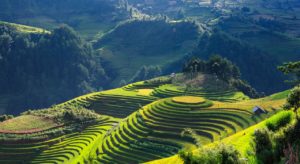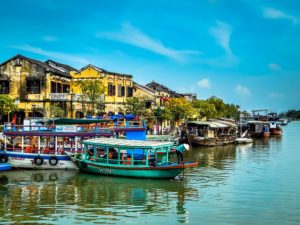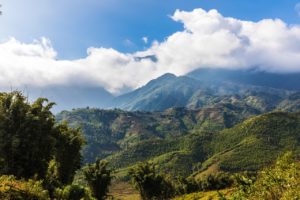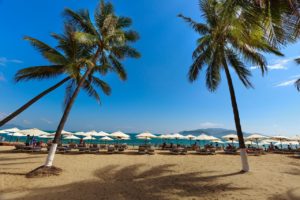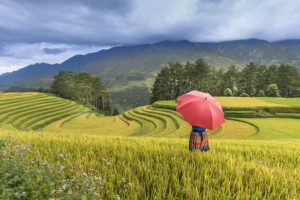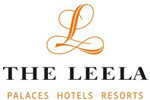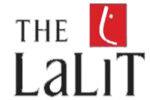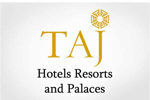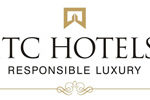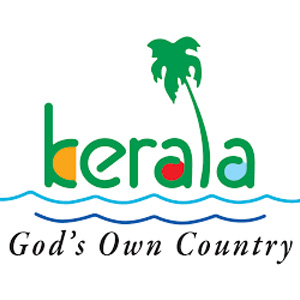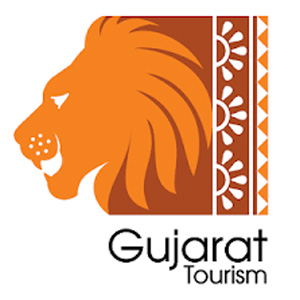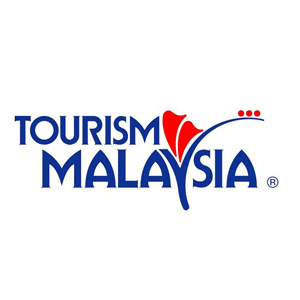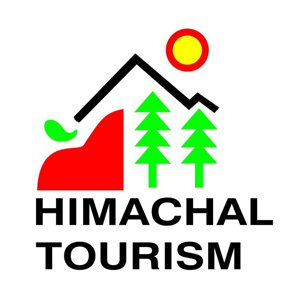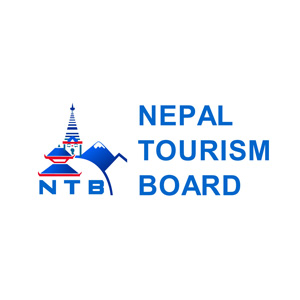



Vietnam - Packages
Hanoi-Halong-Hue-Hoi An-Saigon -Siem Reap
Currency:
Vietnamese Dong
Temperature:
Jan: 17
Feb: 17
Mar: 21
Apr: 24
May: 29
Jun: 29
Jul: 29
Aug: 28
Sep: 25
Oct: : 27
Nov: 22
Dec: 11
Flag:
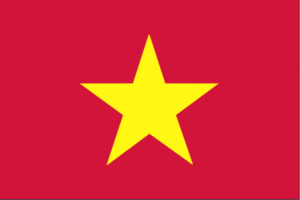
General Information:
Vietnam is a Southeast Asian country on the South China Sea known for its beaches, rivers, Buddhist pagodas and bustling cities. Hanoi, the capital, pays homage to the nation’s iconic Communist-era leader, Ho Chi Minh, via a huge marble mausoleum. Ho Chi Minh City (formerly Saigon) has French colonial landmarks, plus Vietnamese War history museums and the Củ Chi tunnels, used by Viet Cong soldiers.
Geography:
Vietnam occupies the eastern and southern part of the Indochinese peninsula in Southeast Asia, with the South China Sea along its entire coast. China is to the north and Laos and Cambodia are to the west. Long and narrow on a north-south axis, Vietnam is about twice the size of Arizona. The Mekong River delta lies in the south.
Location:
Vietnam sits on the Southeastern end point of Indochina peninsula. It borders with China to the North and Laos and Cambodia to the West. The rest directions are adjacent to the sea, which gives Vietnam a tremendous amount of water based resources such as beaches and marine biodiversity. Vietnam has an S-shaped with 1,650 km in length and the narrowest width is about 50 km.
Area:
Land: 331.212 km2.
Coastline: 3,260 km
Terrace:
A large part of Vietnam territory is covered by hills and mountains. Cultivatable area comprises less than 20%, mainly in the two delta: Red River delta in the North and Mekong delta in the South. Red river delta is smaller than its brother in the South yet more densely populated. This is also the cradle for Vietnamese early establishment.
Main cities and towns include Hanoi, Thai Binh, Nam Dinh, etc. To the South, Mekong delta has the largest agrarian land area and also produces the majority of rice and staple for domestic consumption and export. Because of the low land, there is rising concern that the Mekong Delta will be severely affected by global warming and rise in sea level.
The mountain area includes the Northern highland and Central highland. Harsh weather condition and specific land type make it hard to grow rice. However, in the Northern part, farmers apply the terraced paddy field method which makes use of the scanty water on the mountain to grow rice. Vietnam is also home to the highest mount of the Indochina peninsula- The Fansipan at 3143m.
History And Culture:
Many Vietnamese archeologists and historians assert that the origins of the Vietnamese people can be reliably traced back to at least the fifth or sixth millenniumB.C.when tribal groups inhabited the western regions of the Red River delta. A seminal event in the solidification of Vietnamese identity occurred in 42B.C.E.when China designated the territory as its southern-most province and began direct rule over it. China would rule the region for almost one thousand years, thereby laying the foundation for the caution and ambivalence that Vietnamese have felt for centuries toward their giant northern neighbor. The Vietnamese reestablished their independence in 938. The next thousand years saw a succession of Vietnamese dynasties rule the country, such as the Ly, Tran, Le, and Vietnam’s last dynasty, the Nguyen (1802–1945). These dynasties, though heavily influenced by China in terms of political philosophy and organizational structure, participated in the articulation of the uniqueness of Vietnamese society, culture, and history. This period also saw the commencement of the “Movement South” (Nam Tien)in which the Vietnamese moved south from their Red River delta homeland and gradually conquered southern and central Vietnam. In the process, they displaced two previously dominant groups, the Cham and Khmer.
The modern Vietnamese nation was created from French colonialism. France used the pretext of the harassment of missionaries to begin assuming control over Vietnam in the 1850s. By 1862 it had set up the colony of Cochinchina in southern Vietnam. In 1882 it invaded northern Vietnam and forced the Vietnamese Emperor to accept the establishment of a French protectorate over central and northern Vietnam in 1883. This effectively brought all of Vietnam under French control. The French colonial regime was distinguished by its brutality and relentless exploitation of the Vietnamese people. Resistance to colonial rule was intense in the early years, but weakened after the late 1890s. The situation began to change dramatically in the late 1920s as a number of nationalist movements, such as the Indochinese Communist Party (formed in 1930) and the Vietnam Nationalist Party (formed in 1927), became more sophisticated in terms of organization and ability. Such groups grew in strength during the turmoil of World War II. On 19 August 1945 an uprising occurred in which Vietnamese nationalists overthrew the Japanese administration then controlling Vietnam. On 2 September 1945 Ho Chi Minh officially established the Democratic Republic of Vietnam. The French attempted to reassert control over Vietnam by invading the country in December 1946. This launched an eight-year war in which the Vietnamese nationalist forces, led primarily by the Vietnamese Communists, ultimately forced the French from the country in late 1954. Vietnam was divided into North and South Vietnam for the next twenty-one years. During this period the North experienced a socialist revolution. In 1959 North Vietnam began implementing its policy to forcibly reunify the country, which led to outbreak of the American War in Vietnam in the early 1960s. This concluded on 30 April 1975 when North Vietnamese soldiers captured the city of Saigon and forced the surrender of the South Vietnamese government. On 1 January 1976 the Vietnamese National Assembly declared the establishment of the Socialist Republic of Vietnam, thereby completing the reunification of the Vietnamese nation.
Best Places To Visit:
- Khmer civilization site of hariharalaya
- Bakong temple mountain
- Visit the “great city” of angkor thom
- A boat ride on the tonle sap lake
- Fishermen’s “floating village”
What to do:
- Visit Halong Bay’s equally spectacular neighbour
- The Imperial Citadel of Thang Long is an intriguing relic of Vietnam’s history
- Cruise the Mekong Delta – After travelling over 4,000 kilometres from the Tibetan Himalaya
- Drop into the world’s largest cave
- Ho Chi Minh City Museum – Understand Vietnam’s bloody past
- Go to church Vietnamese-style
- Cycle around Hue
- Find romance at Sapa’s love market
Best time to visit:
Vietnam is a country which benefits from having three different micro climates, making it a great year-round destination. November to April is seen as the peak time to travel as this is when the country sees the least amount of rain; however, when the rains come to the north and south of the country during the rest of the year, the weather in the varied central region of Vietnam stays hot and dry. The UNESCO World Heritage Site of Halong Bay is best seen in March and April, the stunning caves of Phong Nha between February and August, and the vibrant Mekong Delta between October and May.
Map Vietnam:
Vietnam Photos Gallery
Testimonials
Goa Tour
It was G8 experience to book the package of amezing GOA tour. They had given the best rate of the package & of very nice Resort.
Royal Rajashthan
It was very nice experianc booked Royal rajashthan tour. The provided full Facility, good room, food, serivice, what they committed befor booking. We satisfied with his tour, thanks for your Good Supports and service.
Panchgani Package
It was absolutely superb Hotle with nice services I got. Those people provided good hospitality including all aspects like room service, parking, good food quality and guide suggested who warmly showed all the locations in panchgini.
Rameshbhai Patelakshar tools
Goa Tour
It was G8 experience to book the package of amezing GOA tour. They had given the best rate of the package & of very nice Resort.
Royal Rajashthan
It was very nice experianc booked Royal rajashthan tour. The provided full Facility, good room, food, serivice, what they committed befor booking. We satisfied with his tour, thanks for your Good Supports and service.
Panchgani Package
It was absolutely superb Hotle with nice services I got. Those people provided good hospitality including all aspects like room service, parking, good food quality and guide suggested who warmly showed all the locations in panchgini.

